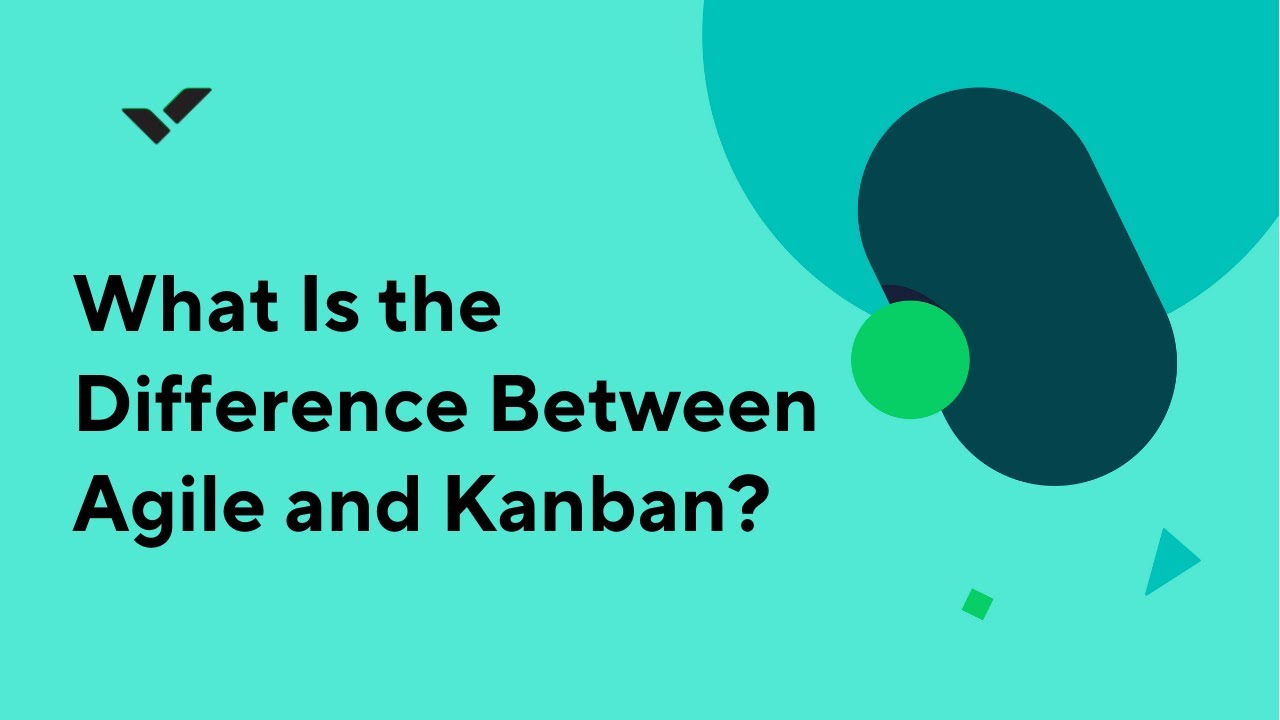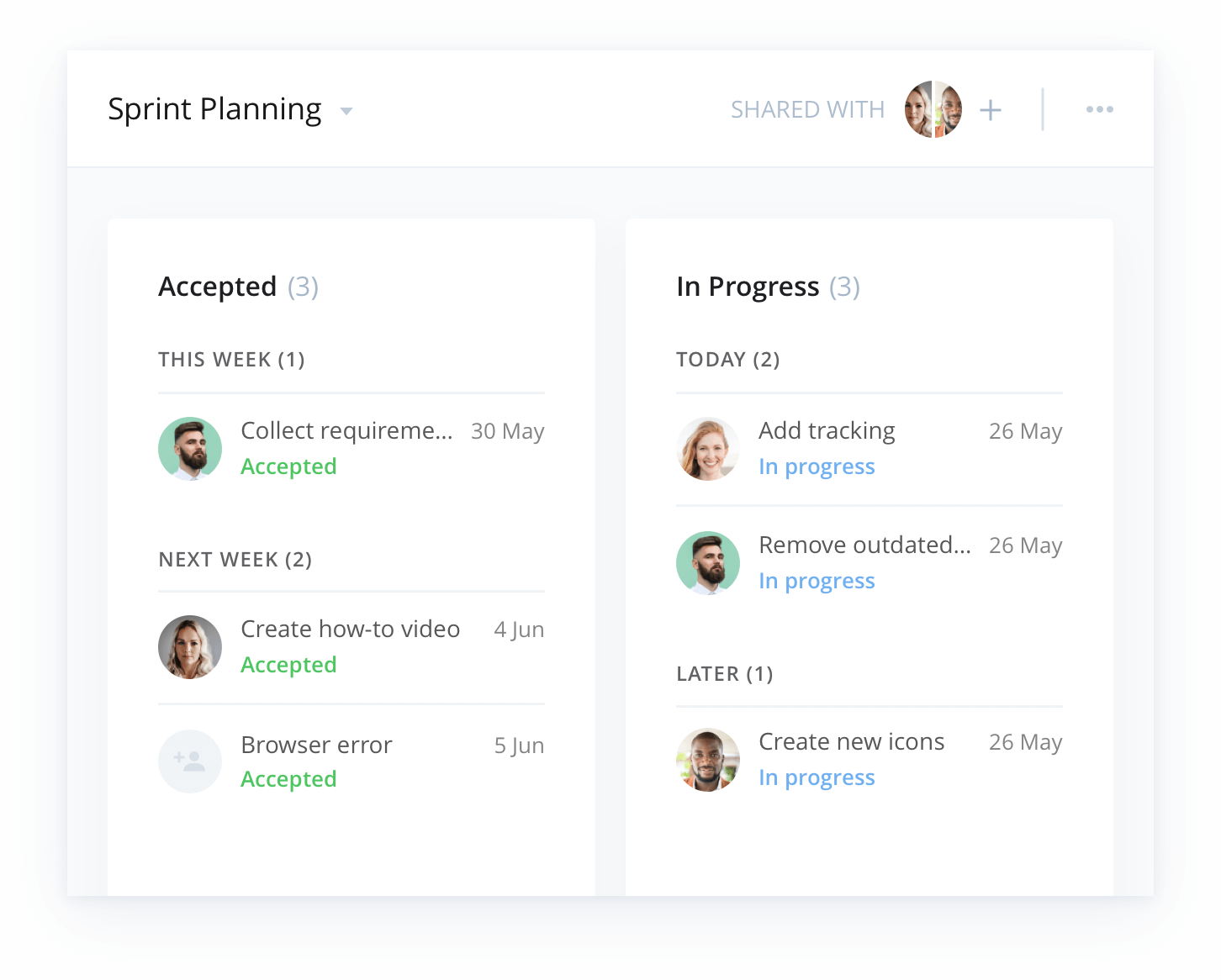What Are the Different Types of Agile Methodologies?

What Are the Different Types of Agile Frameworks?
Agile refers to the methods and best practices for organizing projects based on the values and principles documented in the Agile Manifesto. However, there’s no one right way to implement Agile, and many different types of frameworks from which to choose.
In this article, we will cover the basics of Agile methodology and explore the different frameworks.
Before we begin, you can unlock a free trial with Wrike right away and experience the full potential of Agile software.
Kanban
Kanban methodology is about day-to-day workflows and processes. It is a simple, visual means of managing projects that enables teams to see the progress so far and what’s coming up next. Kanban projects are primarily managed through a Kanban board, which segments tasks into three columns: “To Do,” “Doing,” and “Done.”
Many project management software solutions have Kanban board integration, which teams can use to plot out a task’s progress from start to finish.
The main benefit of this methodology is the increased transparency, allowing team leaders to clearly see which tasks are assigned to which team members and what is yet to be completed to make meaningful progress.
If you are wondering about the difference between Agile and Kanban, you can also watch our video below.

Scrum
Scrum is one of the most popular Agile methodologies, as it can bring teams together with a sharp focus and an efficient, collaborative approach to task execution.
It is similar to Kanban in many ways. Scrum typically uses a Scrum board, similar to a Kanban board, and groups tasks into columns based on progress. Unlike Kanban, Scrum focuses on breaking a project down into sprints and only planning and managing one sprint at a time.
Under this methodology, you would assign a Scrum leader and product owner, who have a direct influence over the rest of the team. This assigned leadership can help teams to spearhead projects and complete them over a short space of time through a series of sprints.
Sprints are the Scrum way of breaking projects down into iterations that can last anywhere between one and four weeks each. Bringing team members together from different departments, these sprints help you channel a collective focus to your projects.
Scrum also features a robust set of principles and activities that dictate how you work. These include:
- Sprint planning: Planning sessions to identify the purpose behind your sprints
- Roles: Key roles in the Scrum project management process
- Product backlog: A list of tasks arranged according to priority level


Extreme Programming (XP)
Extreme Programming (XP) was designed for Agile software development projects. It focuses on continuous development and customer delivery and uses intervals or sprints, similar to a Scrum methodology. However, XP also has 12 supporting processes specific to the world of software development:
- Planning game
- Small releases
- Customer acceptance tests
- Simple design
- Pair programming
- Test-driven development
- Refactoring
- Continuous integration
- Collective code ownership
- Coding standards
- Metaphor
- Sustainable pace
Extreme Programming puts the customer at the center of everything the team does. In XP, teams can involve the end users in a meaningful way and use the feedback they get to deliver the best possible product.
Feature-driven development (FDD)
Feature-driven development is another software-specific Agile framework. This methodology involves creating software models every two weeks and requires a development and design plan for every model feature. It has more rigorous documentation requirements than XP, so it’s better for teams with advanced design and planning abilities. FDD breaks projects down into five basic activities:
- Develop an overall model
- Build a feature list
- Plan by feature
- Design by feature
- Build by feature
Dynamic Systems Development Method (DSDM)
The Dynamic Systems Development Method (DSDM) was born of the need for a common industry framework for rapid software delivery. Rework is to be expected, and any development changes that occur must be reversible. Like Scrum, XP, and FDD, DSDM uses sprints. This framework is based on eight fundamental principles:
- Focus on the business need
- Deliver on time
- Collaborate
- Never compromise quality
- Build incrementally from firm foundations
- Develop iteratively
- Communicate continuously and clearly
- Demonstrate control
Crystal
Crystal is a family of Agile methodologies that includes Crystal Clear, Crystal Yellow, Crystal Orange, Crystal Red, etc. Each has a unique framework. Your choice depends on several project factors, such as your team size, priorities, and project criticality.

Lean
Lean development is often grouped with Agile, but it’s an entirely different methodology that happens to share many of the same values. The main principles of the Lean methodology include:
- Eliminating waste
- Build quality in
- Create knowledge
- Defer commitment
- Deliver fast
- Respect people
- Optimize the whole
Adaptive Project Framework
Adaptive Project Framework, or APF, is an Agile methodology that keeps teams on their feet, ready to adapt to changing circumstances and project scope.
By breaking each project down into iterative cycles, or phases, teams can frequently check in and evaluate what’s necessary to complete each small project. Through regular assessment, teams can react quickly to changes and ensure they stay on track with timelines.
Supercharge Agile methodology with Wrike
So, now you know all about the different Agile frameworks, it’s time to select robust project management software that can help you implement them.
Wrike offers a range of features specifically designed to support Agile methodology. From Kanban boards to sprint planning, Wrike empowers teams to effectively implement Agile practices while maintaining visibility, transparency, and productivity. With Wrike, you can seamlessly adapt to the iterative nature of Agile, enabling your team to deliver projects in a nimble manner.
Take your Agile journey to new heights by exploring the features and benefits of Wrike’s flexible project management software.

